FLATBACKS AND POOCHES
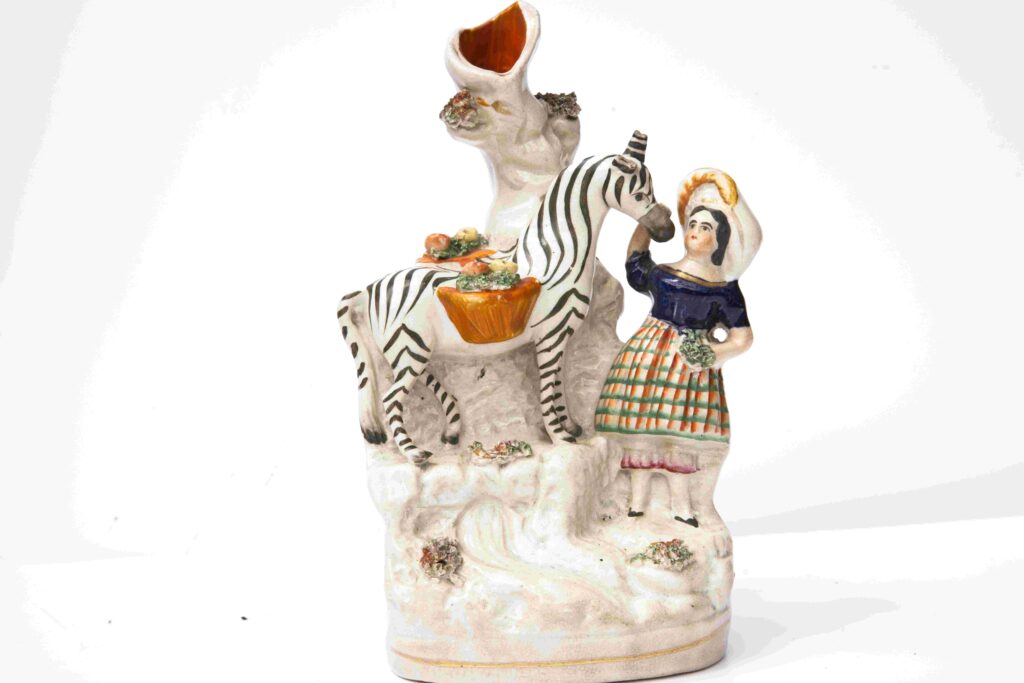
Unusual Staffordshire Figurine c.1870
English pottery figurines are a fun and fascinating mix of art, history, and culture that have charmed collectors for ages. Whether it’s Derby porcelain, Staffordshire flatbacks, or mantlepiece spaniels, each piece has its own story to tell. During Queen Victoria’s reign, these decorative items became all the rage, reflecting her influence on taste and home decor.
Derby porcelain really made its mark in the mid-18th century, becoming one of England’s go-to producers of top-notch ceramics. Known for their fine porcelain and beautifully hand-painted designs, Derby’s figurines often featured mythological or pastoral scenes .
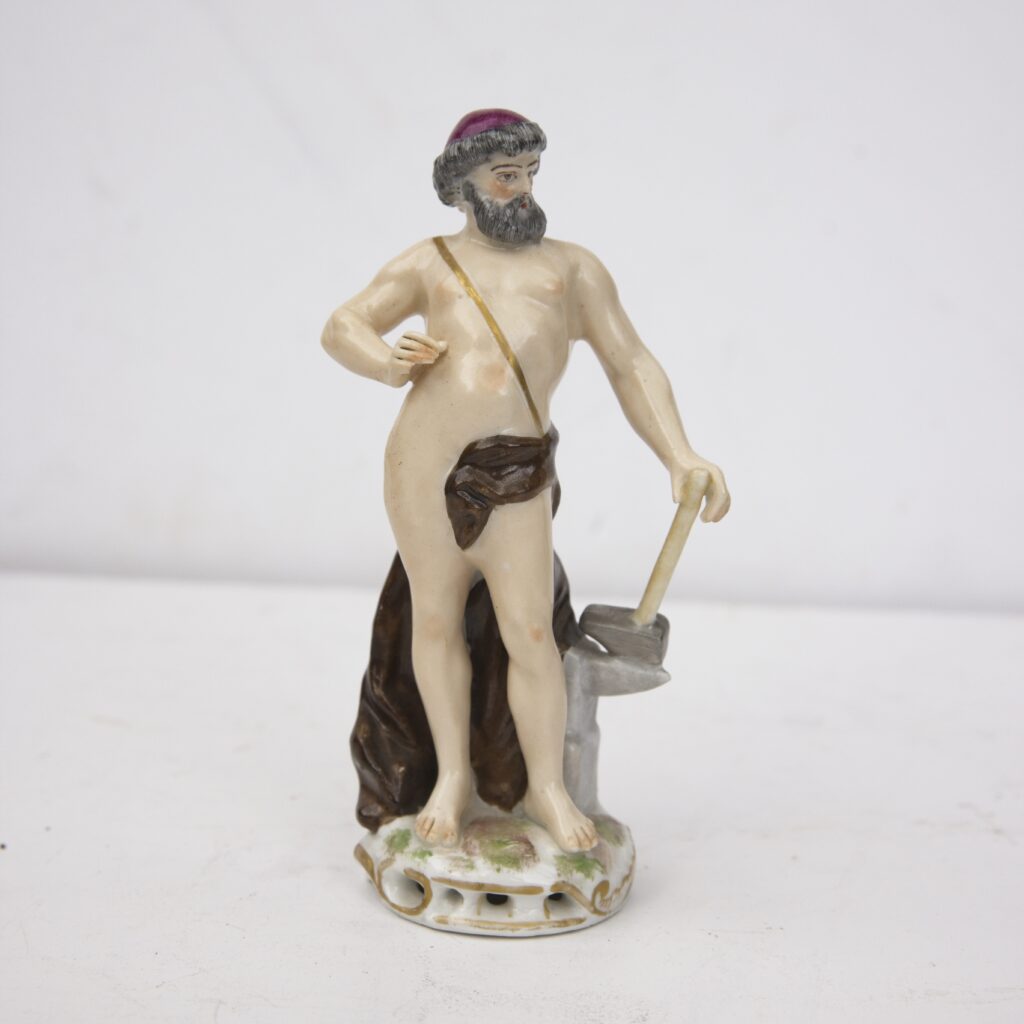
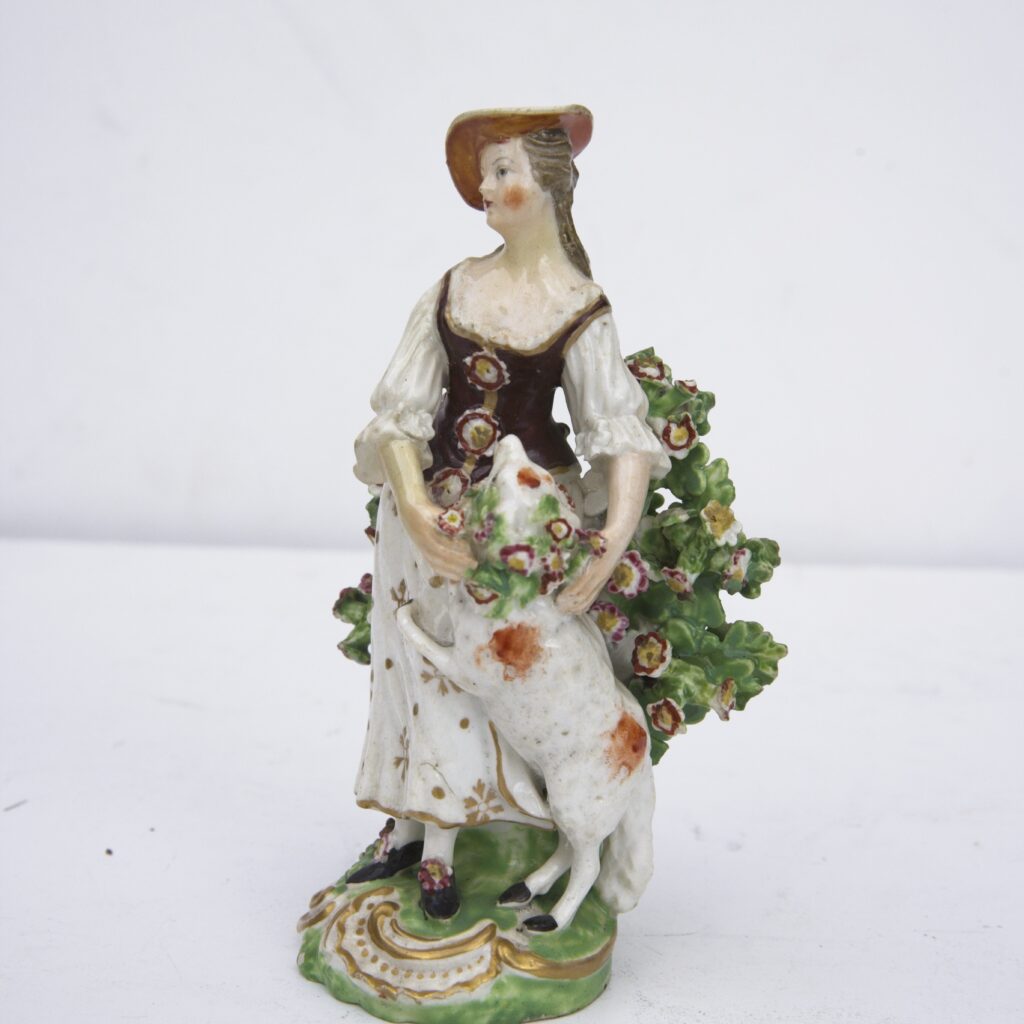
Derby figure of ‘Vulcan’ c. 1820
Derby figurine c. 1780
A few decades later during the reign of Queen Victoria, ornamental ceramics became all the rage, fitting perfectly with the Victorian obsession with creating beautifully adorned homes.
Unlike the fancy appeal of Derby porcelain, Staffordshire flatbacks took a more down-to-earth approach to pottery figurines in the 19th century. Made in the Staffordshire area, these figurines were designed with flat backs so they could sit snugly against walls or mantles. They were painted in bright colours and often showed scenes from daily life, pop culture, or important events like royal weddings and military triumphs.
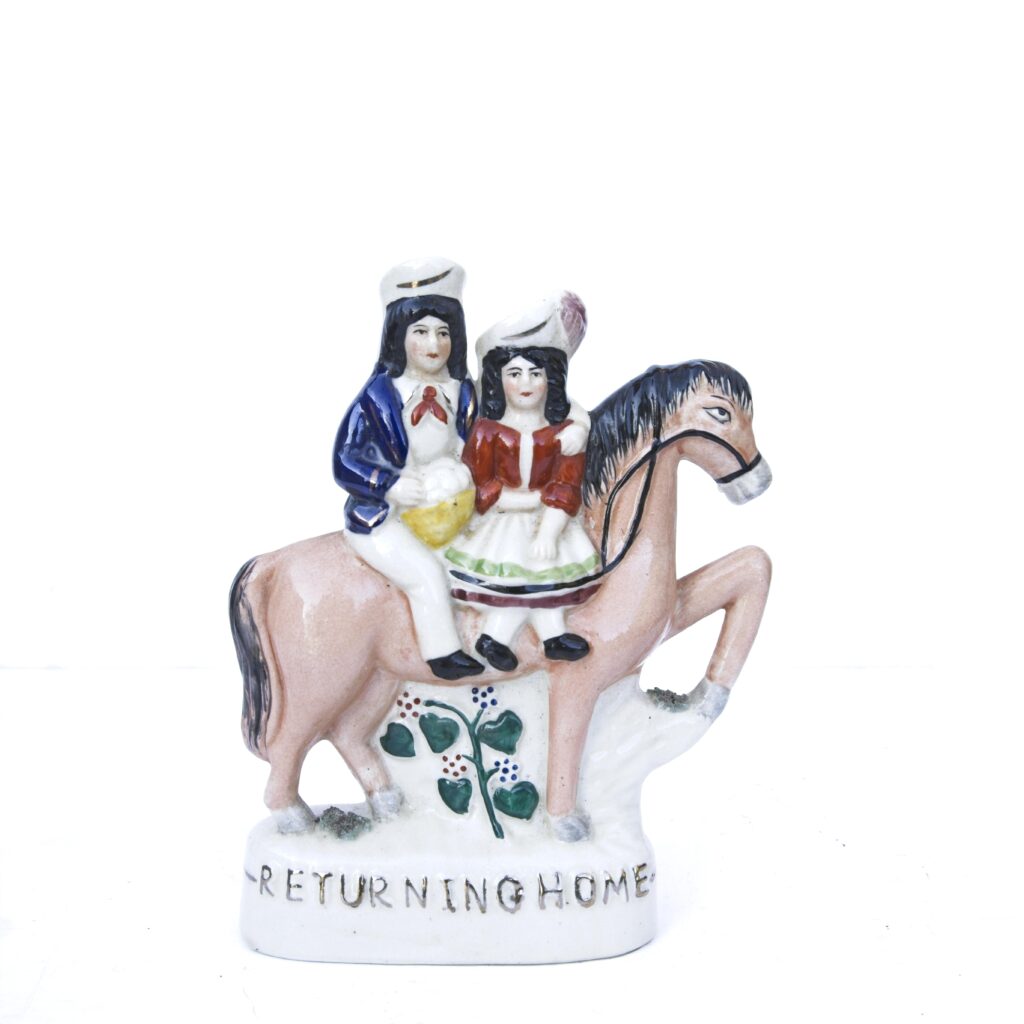
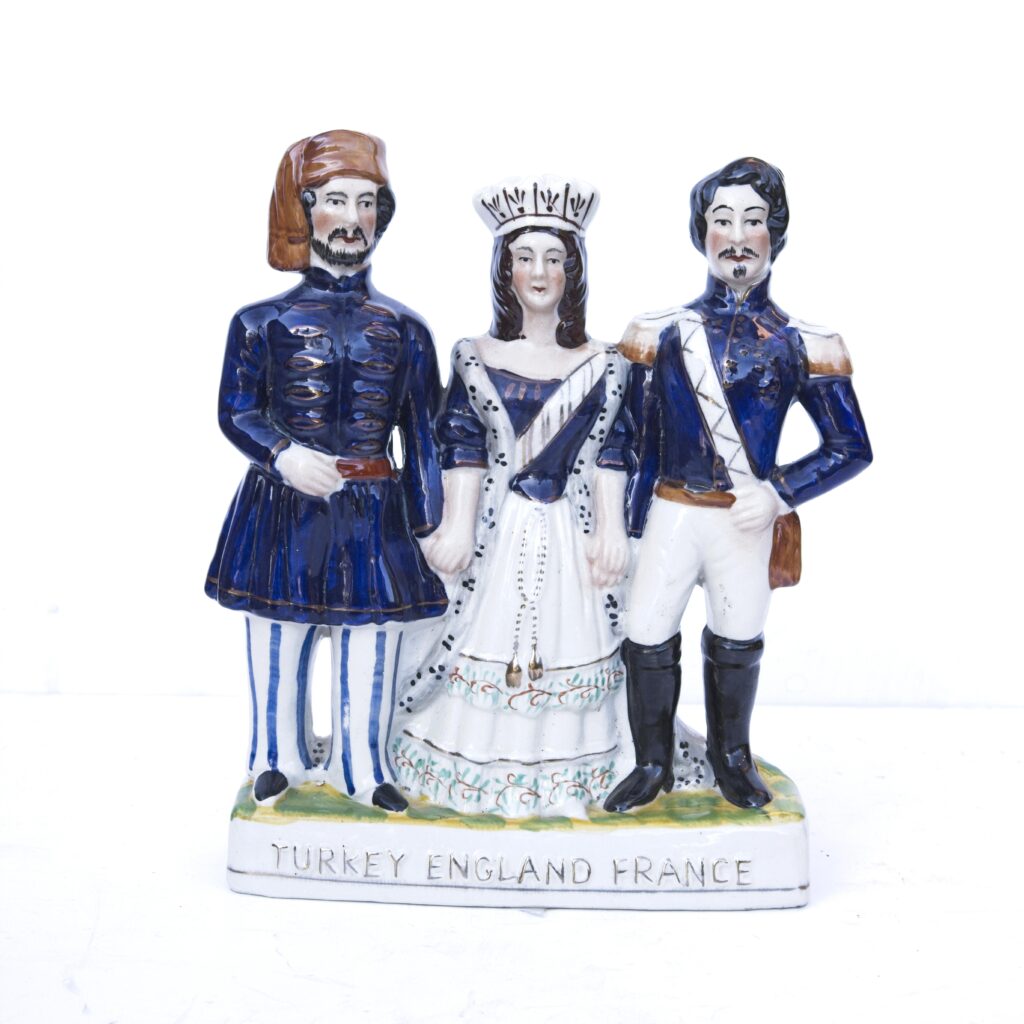
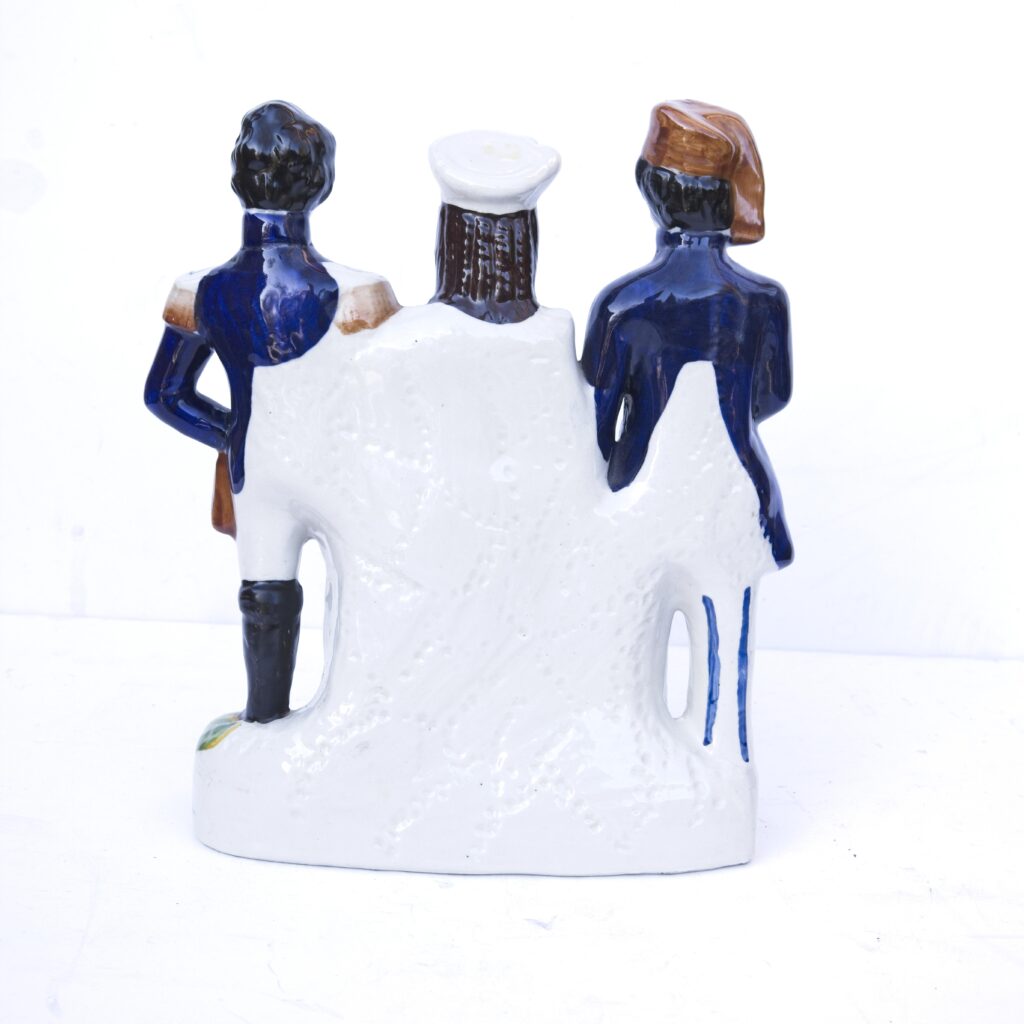
Staffordshire-style Figurine. Date unknown
Flatback showing the…flatback!
Queen Victoria’s popularity played a big role in making these figurines a hit. Thanks to her influence and the Industrial Revolution making production easier, flatbacks became affordable for the growing middle class. Figurines of Queen Victoria, Prince Albert, and their family were especially popular, showing how much people loved the monarchy back then. Bonnie Prince Charlie was a real favourite, with plenty of tartan to be found.
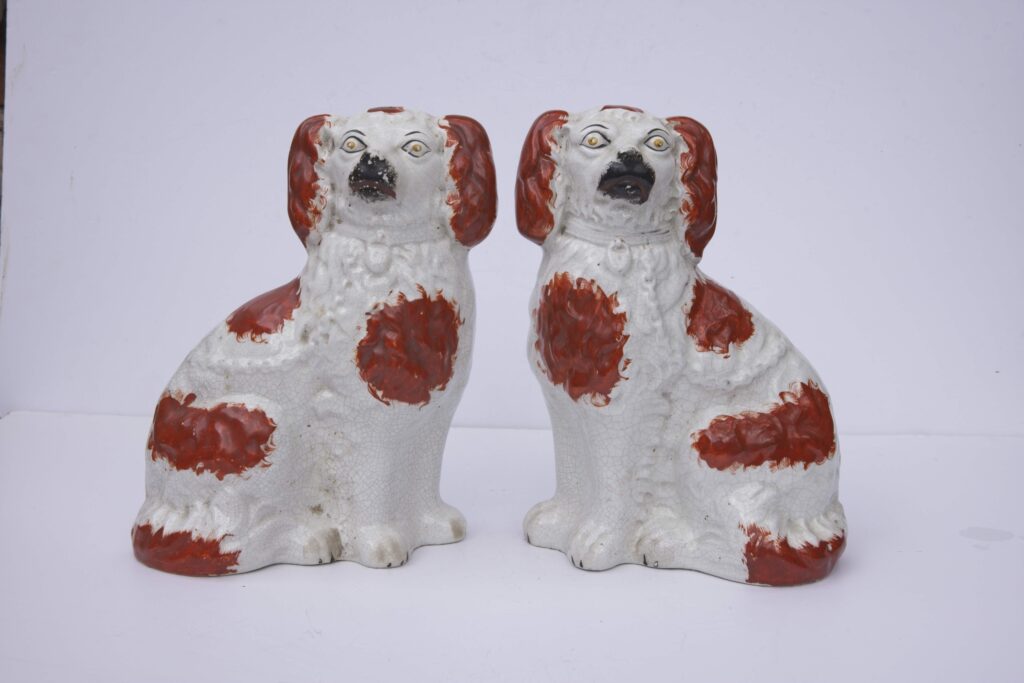
Nineteenth century Mantlepiece Spaniels
You can’t talk about English pottery figurines without mentioning mantlepiece spaniels, also known as Staffordshire spaniels. These ceramic dogs were a must-have in Victorian homes, usually coming in pairs and placed proudly on mantlepieces. They stood for loyalty and companionship, which fit perfectly with how much Victorians loved their pets, especially dogs.
The design of these spaniels was inspired by Queen Victoria’s fondness for her King Charles Spaniels, especially her favourite dog, Dash. This royal connection made them incredibly popular and something people from all walks of life wanted to own. These days, collectors love mantlepiece spaniels for their simple, charming looks and the way they bring a touch of Victorian nostalgia to any space.
Collectors should keep an eye out for a few key things when hunting for these figurines. The most important is making sure they’re authentic, which is more difficult with pottery figures than it is with some other collectable antiques:
- Early Derby figures (1750s to 60’s) are often unmarked and may show ‘Dry Edge’ around the base. This is where the figure was left unglazed to make firing easier. The colours are often muted, almost pastel in appearance. The green leaf design on some figures (called ‘Bocage’) is made up of tiny, individual leaves and, very often has some damage.

Unglazed base of 18th century Derby figurine with a simple, inscribed model number
- With pairs of figures, especially Spaniels look out for differences in the painting of, for example whiskers and eyelashes. Discrepancies point to hand-painted and therefore original figurines. Gilding is likely to be fairly worn on originals and often less than perfectly applied. This work was often done by children!
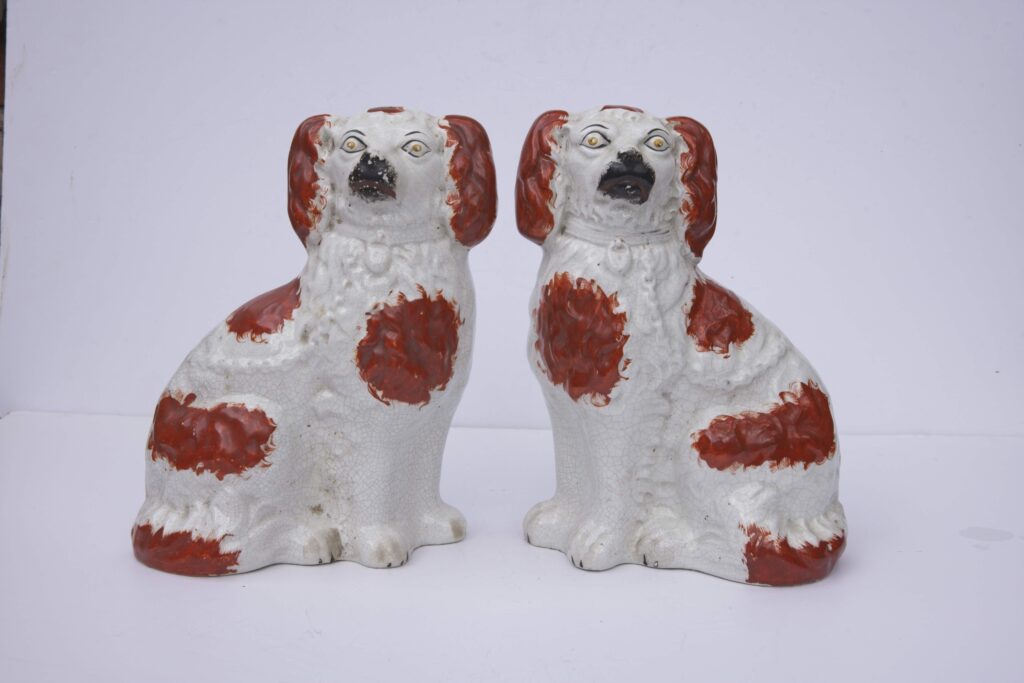
- Although damage to the tiniest extremities of porcelain and other pottery figures is very common and often as good as it is going to get, look out for major flaws like large chips and cracks. You’re bound to end up paying more than you should!
In the end, collecting English pottery figurines isn’t just about owning pretty things. It’s about connecting with the past, whether it’s the classy feel of Derby porcelain, the everyday appeal of Staffordshire flatbacks, or the mantlepiece spaniels that held a special place in Victorian homes. These treasures have a way of blending history, art, and nostalgia into something truly unique.


